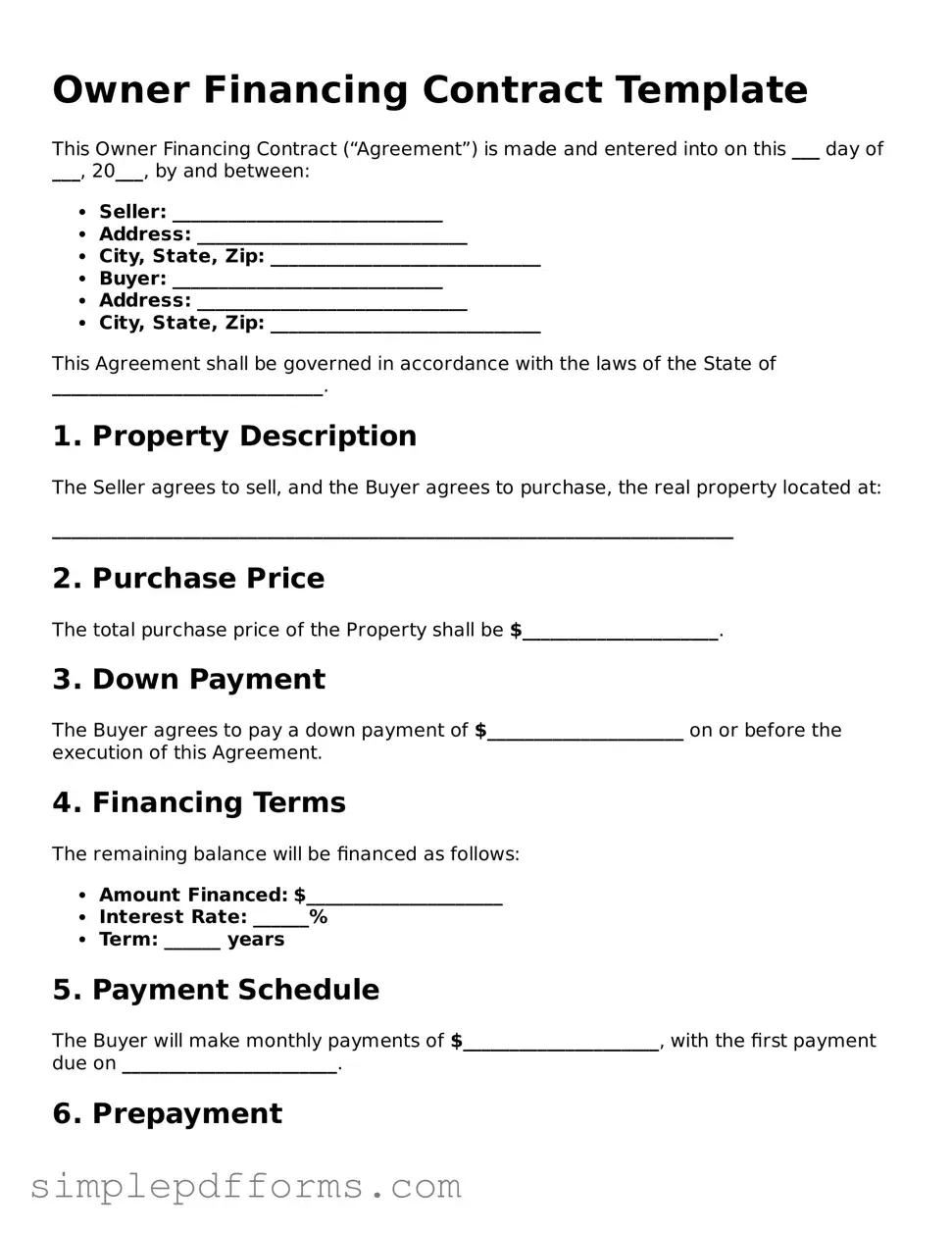Owner Financing Contract Template
This Owner Financing Contract (“Agreement”) is made and entered into on this ___ day of ___, 20___, by and between:
- Seller: _____________________________
- Address: _____________________________
- City, State, Zip: _____________________________
- Buyer: _____________________________
- Address: _____________________________
- City, State, Zip: _____________________________
This Agreement shall be governed in accordance with the laws of the State of _____________________________.
1. Property Description
The Seller agrees to sell, and the Buyer agrees to purchase, the real property located at:
_________________________________________________________________________
2. Purchase Price
The total purchase price of the Property shall be $_____________________.
3. Down Payment
The Buyer agrees to pay a down payment of $_____________________ on or before the execution of this Agreement.
4. Financing Terms
The remaining balance will be financed as follows:
- Amount Financed: $_____________________
- Interest Rate: ______%
- Term: ______ years
5. Payment Schedule
The Buyer will make monthly payments of $_____________________, with the first payment due on _______________________.
6. Prepayment
The Buyer may prepay the balance of this loan in whole or in part at any time without penalty.
7. Default
If the Buyer fails to make any payment when due, the Seller may exercise remedies as provided by applicable law. After ___ days of non-payment, this Agreement may be considered in default.
8. Signatures
By signing below, both parties agree to the terms outlined in this Owner Financing Contract.
Seller Signature: ___________________________ Date: __________
Buyer Signature: ___________________________ Date: __________
This Agreement represents the entire understanding between the parties. No modifications shall be valid unless in writing and signed by both parties.
